Life style
Australian company has a plan to mine sands

Mannar Island is a bird paradise that survived Sri Lanka’s civil war
Two thousand flamingos and a war-torn island: controversy over Australian mine proposal
Have you heard of Sri Lanka’s Mannar Island?
Up to a million migrating birds seek sanctuary here each year on their gruelling journeys South, and thousands of flamingos call the island home too.
It’s also home to the survivors of a 26-year civil war, who are still rebuilding their lives and rely on the island for their subsistence livelihoods.
An Australian ASX-listed company wants to mine on the island for mineral sands – a booming global industry extracting vital minerals for a multitude of uses.
But Sri Lankan scientists, environmentalists, and human rights activists are concerned about the impact a mine could have, and dismayed about the lack of information on what’s proposed.
Science Friction investigates.
by environment reporter Nick Kilvert and Jane Lee for Science Friction
As a small child, Shreen Abdul Saroor remembers getting up before dawn with her father to spy on the masses of migratory birds that would visit her island.
The birds were on their way down the Central Asian flyway — a migration path that crosses 30 countries from Siberia to the Indian Ocean.
“We would hide somewhere and … we don’t make any noise,” Ms Saroor recalls.
“[Then we’d watch] them coming and landing in the causeway areas and then catching fish and taking off as a huge group covering the entire sky.”
Up to a million birds stop at Mannar Island, off the north-west coast of Sri Lanka, to feed during the winter.
 The Vankalai Bird Sanctuary on the southern tip of the island is protected by the Sri Lankan government and has been internationally recognised under the Ramsar Convention for its importance to both local and migratory birds.
The Vankalai Bird Sanctuary on the southern tip of the island is protected by the Sri Lankan government and has been internationally recognised under the Ramsar Convention for its importance to both local and migratory birds.
Ms Saroor also remembers climbing the swollen trunks and gnarled branches of the baobab trees — trees synonymous with Africa, Madagascar and Australia’s Kimberley, but also found incongruously on her tiny island.
“Even though I fondly remember these baobab trees, one thing that I really remember is how … [members of the militant separatist group the Tamil Tigers] put the mutilated heads of the Indian peacekeeping forces on those trees.”
The Liberation Tigers of Tamil Eelam fought a 30-year civil war with majority Sinhalese Sri Lankan military, in an attempt to create an independent Tamil homeland in the north and east of the country.
Ms Saroor had already left the island to study in Colombo in 1990 when the Tamil Tigers forced her remaining family off Mannar Island, along with all the other Muslim residents.
“Everybody overnight became refugees,” she says.
Since the war ended in 2009, many displaced Mannar Islanders have returned to re-establish themselves in fishing and farming communities. But the trauma still lingers and there are tensions over land.
Against this backdrop, an Australian company has a plan to mine Mannar’s sands.
There are fears for the island’s fragile ecology, agriculture and fishing areas — and islanders are worried they could be displaced all over again.
Company’s drilling triples estimate of island’s minerals
Mannar is the biggest island at the base of a narrow chain of limestone shoals known as Rama Setu or Adam’s Bridge, which stretches 48 kilometres north-west to join India.
The island is 26km long by 8km wide and has rich deposits of the mineral ilmenite in its sand.
Ilmenite is the main source of titanium dioxide, a valuable white pigment used in things like paints, ink, plastics and cosmetics.
In 2018, Perth-based company Titanium Sands advised the Australian Securities Exchange (ASX) it entered an agreement with Srinel Holdings Ltd to explore the extent of the island’s ilmenite reserves.
 In May this year, the company announced their exploratory drilling had tripled the previous estimate — to a total of just under 265 million tonnes.
In May this year, the company announced their exploratory drilling had tripled the previous estimate — to a total of just under 265 million tonnes.
Managing director of Titanium Sands, James Searle, says the company is looking to mine an area of the island that is 2km wide and about 8km long.
“That’s probably over a 30-plus year lifespan,” he told ABC RN’s Science Friction.
“On an annualised basis that’s probably … in the region of between 10 and 16 hectares.”
But some Sri Lankan scientists and environmentalists say they have been inadequately informed about the project.
‘The machines are moving in’
Ms Saroor’s younger brother is one of those who have made it back to the island, where he has a coconut estate.
“The first time I heard about this Titanium Sands mining is from him,” Ms Saroor says.
“He called me frantically and said there are machines moving in and out of those areas.”
Companies that Titanium Sands acquired started preliminary assessment with small-scale drilling on the island in 2015.
Throughout the totality of their study, which included a scoping study completed this year, the company drilled more than 3,000 exploratory holes with the deepest going down to 12 metres. The majority were between 1 and 3 metres.
According to Dr Searle, there has been no drilling in built-up areas of the island.
“The population on the island is largely concentrated in a town down the landward end of the island, called Mannar Town. There are other coastal villages, other settlements around the island,” he says.
“Our exploration work is only being undertaken on areas where there is no habitation and where there is no active agriculture.”
It’s some of those undeveloped areas of Mannar Island that concern ecologist Sampath Seneviratne, who studies Mannar’s birds.
“Flamingos must be the most charismatic and sought-after in terms of beauty,” he says. “[But] spoon-billed sand piper, one of the rarest birds in the world and one of the most iconic species that are on the verge of extinction right now, has been recorded in Mannar.
“These birds require highly productive places to feed during their migration and during their winter stopover. So if the productivity drops, they can’t use Mannar, they have to go [to] other places.”
According to Dr Seneviratne, a public notice is usually issued when companies are given permission for mining exploration in Sri Lanka.
But he and his colleague at the Wildlife Protection Society only found out from a friend in Australia about the drilling, and they were surprised that local environmental groups knew nothing of the project.
“It was a big shocker, because how did people like us working in [Mannar] not know
Company accused of illegal conduct by Mines Bureau
Earlier this year in June, Titanium Sands was accused of illegal conduct in local Sri Lankan media reports.
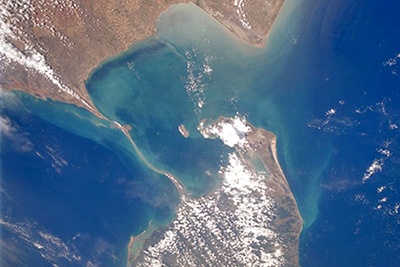 The Sri Lankan Geological Surveys and Mines Bureau (GSMB) — the government body responsible for issuing mining and exploration licenses in Sri Lanka — reportedly said the company’s exploration was unlawful.
The Sri Lankan Geological Surveys and Mines Bureau (GSMB) — the government body responsible for issuing mining and exploration licenses in Sri Lanka — reportedly said the company’s exploration was unlawful.
The GSMB told local media that under Sri Lankan law, Titanium Sands couldn’t legally acquire the rights to explore Mannar by purchasing the company (Srinel Holdings Ltd) that previously held the licenses.
But Dr Searles says the GSMB was “incorrect” and was responding to misleading social media posts.
“The legal advice and the legal structures are in total compliance with the Sri Lankan regulations,” he says.
The ABC contacted the GSMB but did not receive a response.
In November, a committee was put together by the Sri Lankan Ministry of Industry to look into the claims of illegal drilling.
Titanium Sands presented its case to the Ministry of Industry, but Dr Searle says he hasn’t heard anything further.
“I reiterate again that the licenses are held in a fashion which is in total compliance with the legal requirements in Sri Lanka
At the time Science Friction went to air there was no information on the company website about the committee’s enquiries into the project.
Asked why, Dr Searle responded: “We received enquiries on all manner of things and we don’t consider it to be significant.”
The company has since added a statement that says it “is not being investigated” although they have “provided information to the committee” which they say confirms the validity of their licences.
It also stated that the company has “no intention of pursuing a project that potentially impacts a Ramsar-designated area”.
Mannar ‘promoted as a promising resource’
Environmental scientist and senior director of the Centre for Environmental Justice, Hemantha Withanage, says he is concerned he hasn’t heard anything about the committee’s enquiries since the Sri Lankan federal election in August.
But, he says, the picture Titanium Sands is painting for their shareholders is not all it seems to be.
“On their website, they’re promoting Mannar Titanium Sands as a promising resource,” Mr Withanage says.
“How can somebody promote like that, without going through the environmental impact assessment process and getting the government approval?”
“We are very, very concerned about what this company is going to do in Sri Lanka,” he says.
But an environmental impact assessment and public consultation are the next steps in the process, according to Dr Searle.
“That would eventually [lead to], we hope, granting of mining licences and ultimately development of the project,” he says.
Mining would ‘dramatically transform’ the ecosystem
Mineral sands mining is considered to have a fairly low impact on the environment compared to some other forms of mining.
The process doesn’t involve chemical separation of minerals such as in gold mining, or digging vast open-cut pits such as with coal.
Titanium Sands published material online showing the location of their resources including exploratory drill holes near the coast.
Daniel Franks, program leader of the development minerals strategic program at the University of Queensland, says Titanium Sands’ scoping study, released

to the ASX in June this year, reveals the size of the planned mine is extensive and includes areas just a few metres from the beach.
If the operation was based in Australia, the company would be unlikely to be granted permission to mine those areas, says Professor Franks, who is not involved in the project.
“Mining to such a wide extent would dramatically transform the ecosystem. It would also limit the land uses that the community already has for the island,” he says.
“If it was in Australia, which is the home company of the project partners, it would face some pretty steep obstacles to regulatory approval.”
Mining near active beaches can disturb coastal morphology and removing vegetation can leave sand dunes vulnerable to erosion.
Managing director Dr Searle stresses that his company may not end up being able to mine all the resources they’ve identified, should the mine go ahead.
He says the company doesn’t intend to mine near beaches on Mannar, and that there is no economic incentive for the company to do this.
“Those areas along the shoreline are of no interest to us whatsoever because we consider them to be environmentally sensitive. We are much more interested in the interior, one to three kilometres away from the nearest coastline.”
But Professor Franks says the company’s assertion that it has no plans to mine near the beach “appears contrary to the scoping study released to the ASX” and that an update to the ASX might be in order.
Ms Saroor is also afraid the mine could damage the island’s groundwater.
“Mannar gets the smallest amount of the rain in the whole of Sri Lanka. So we totally depend on groundwater,” she says.
Professor Franks says the extent to which a sand mine could disturb the groundwater on Mannar depends on how deep Titanium Sands digs into the ground.
“I think there is a potential to impact groundwater systems. We’ve seen that in Australia where there’s indurated layers in the sand, that are impermeable and that can hold water,” he says.
“But I think the bigger impact is just the surface disturbance that’s going to happen across the island.”
Dr Searle, however, says the project will not affect groundwater or disturb beach areas.
“If it was to affect the groundwater, we wouldn’t be doing it,” he says.
“How you can make a statement that [this type of operation] would not be permitted in Australia is farcical.
“This sort of operation … has occurred over the last 50 to 60 years [in Australia] with an excellent environmental record.”
‘The people on the ground have the right to say no’
Rather than displacing people, Dr Searle says the mine will create between 200 and 600 jobs and that 95 per cent of those employed would be Sri Lankan people.
But Ms Saroor, who is now an award-winning human rights activist, is concerned about the impact on a community recovering from war.
She believes Titanium Sands should not add to the trauma of a community that is still rebuilding.
“At the end of the day, they are investing in Sri Lanka to make profit,” she says.
“So, my message would be to them to make sure not to profit out of a community that has been suffering in the last 30 years of the war.
“Think about the impact not only on the environment, but also on the people, and [then] make their decision.”
Mr Withanage of the Environmental Justice Centre says he could support the project, if it can be proven to be done in a way that benefits the local community and earns its social licence.
He says the final decision on whether the mine goes ahead needs to rest with the Mannar people.
“It’s not the Australian citizens who are going to make that decision.
“It is the Sri Lankan citizens going to that place, Sri Lankan government agencies, Sri Lankan courts… So they have to make that information available to Sri Lankans first.
“Australians are just going to buy the shares. The people on the ground have the right to say no.” –ABC
- News Advertiesment
See Kapruka’s top selling online shopping categories such as Toys, Grocery, Flowers, Birthday Cakes, Fruits, Chocolates, Clothing and Electronics. Also see Kapruka’s unique online services such as Money Remittence,News, Courier/Delivery, Food Delivery and over 700 top brands. Also get products from Amazon & Ebay via Kapruka Gloabal Shop into Sri Lanka.
Life style
LUXASIA aims to lead luxury beauty’s growth in Sri Lanka
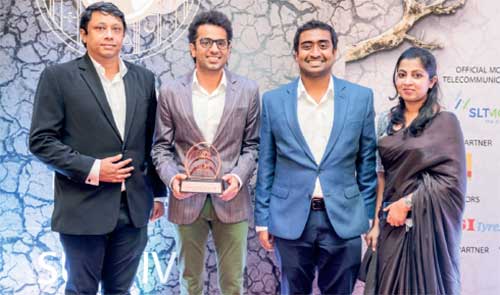
Sri Lanka is a land renown for stunning natural beauty. Yet, LUXASIA still managed to usher in a different kind of beautiful to the market through its expertise in luxury beauty retail and omni-distribution.
In November 2019, LUXASIA unveiled its inaugural classy beauty counters at Odel, One Galle Face. Since then, it has brought enchanting fragrances from luxury brands such as Burberry, Calvin Klein, Gucci, and Marc Jacobs, as well as trendy skincare from KORA Organics to beauty-lovers in an exquisite and captivating retail format.
Now, having successfully overcome the challenges in 2020 imposed by COVID-19 and related lockdowns, LUXASIA is ready and excited to thrill Sri Lankan consumers again. This time, it is with the launch of both skincare and make-up collections from the prestigious Japanese beauty brand, Shiseido. Arriving with a glamorously magnificent pop-up at One Galle Face from 8 to 14 February 2020, LUXASIA promises to bring memorable consumer experiences and a feast for the eyes that showcases the best in Japanese beauty.
Leading up to this pop-up, LUXASIA partnered the Key Opinion Leaders (KOLs) and top influencers of Sri Lanka to excite the beauty community with a sneak peek of what Shiseido have to offer. This campaign garnered more than 100,000 social interactions, with over 1.2 million social media impressions, piquing consumers’ fascination in Shiseido’s award-winning and best-selling serum, The Ultimune Power Infusing Concentrate.
Looking ahead into 2021, LUXASIA aims to continue delighting consumers with even more fresh retail innovations to spice up the luxury beauty scene in Sri Lanka. Soon, fragrance enthusiasts can expect a unique pop-up of all the scents that Luxasia carry, featuring new launches from Davidoff and Calvin Klein, as well as other interesting novelties. Beauty-lovers can also expect more limited edition products and gifts-with-purchases, interesting workshops, as well as seasonal offerings in the coming months. Concurrently, LUXASIA also aspires to continue grooming the Sri Lankan beauty community through more entertaining collaborations with KOLs throughout 2021.
LUXASIA sees immense potential in Sri Lanka’s fast-growing beauty market and has been its voice in the international beauty industry. For some time now, LUXASIA has been relentlessly reaching out to numerous luxury beauty brands across to world to interest them in Sri Lanka. While it is encouraging to see the first-fruits, LUXASIA is aiming much higher. Forging ahead, LUXASIA strives to champion and lead the growth of luxury beauty in Sri Lanka, through even more partnerships with great brands, and by continuously delighting consumers.
Life style
Newly published guide opens many windows on whale watching
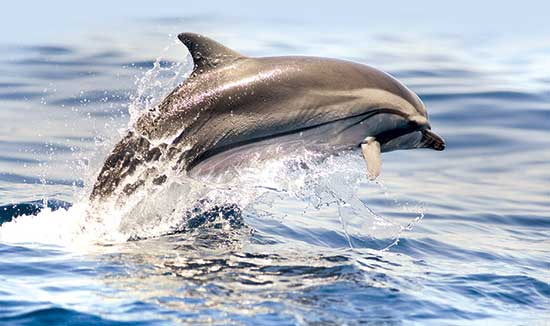
by Ifham Nizam
Shipping lanes to the south of Dondra pose the threat of ships colliding with whales as the area has very rich marine life which also attracts whale watching boats, says prolific wildlife writer and photographer Gehan de Silva Wijeyeratne, author of the recently published ‘A Naturalist’s Guide to the Mammals of Sri Lanka’.
He says international shipping industry organizations have written to the government to push back the existing shipping lanes and if no action is initiated, there is the danger of whale watching boats colliding with vessels.
Dr. Susannah Calderon and her colleagues at the University of Ruhuna have recommended the shipping lanes be moved 15 nautical miles south. The cost impact to all concerned will be negligible, but it significantly improves safety at sea, especially at night when the sea is dotted with the lamps from hundreds of small fishing crafts in the path of giant container carriers.
“It is primarily a safety issue though an important secondary impact will be that it reduces fatal collisions with whales, while generating favourable publicity for the government of Sri Lanka. It boils down to moving the shipping lanes further south and saving lives, Wijeyeratne stressed in an interview with The Sunday Island.
Asked what’s special about his latest publication, he said: “This is the first photographic field guide which covers nearly all of the mammals found in Sri Lanka. It covers 96 per cent of the land and marine mammals. The book, which is portable and affordable, also contains a large number of images from 40 photographers which are practically useful in the field to identify 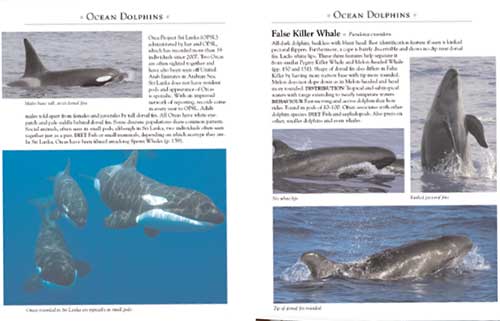 a mammal to species level. It also covers a number of small, discrete, nocturnal mammals whose existence that even many local wildlife enthusiasts will not be aware of.”
a mammal to species level. It also covers a number of small, discrete, nocturnal mammals whose existence that even many local wildlife enthusiasts will not be aware of.”
On the book’s coverage of the marine mammals, Wijeyeratne said there are two noteworthy aspects. Firstly, it covers all the species recorded in Sri Lankan waters expect for one, the Omura’s Whale. This will be included in a second edition. Secondly, it uses images of the whales and dolphins (cetaceans) which will show the animals the way a whale watcher will see them on the surface.
Artwork that shows the whole animal is important, but in field conditions, they are often of limited value to identify cetaceans which only show a little of their upper body in sections at a time they surface.
Q: You were the first to publicize that Sri Lanka was the best location for Blue Whale sightings and offered the best chance to see a superpod of Sperm Whales. Can you explain briefly how you set about branding Sri Lanka as a top international destination for whale watching?
A:
I started with field work to ascertain the facts and launched a media campaign initially with Jetwing Eco Holidays and Jetwing Hotels which was supported over many years by the Sri Lanka Tourism Promotion Bureau (SLTPB) and others in the media and tourism business. I have published 37 articles on whale watching in Sri Lanka. The first, in May 2008, was pivotal as it boldly stated that Sri Lanka was best for Blue Whales. This set everything in motion. My articles give due credit to many people who were a part of this amazing story. This includes Dr. Charles Anderson who first told me it would be feasible to see Blue Whales from the South.
A Belgian millionaire philanthropist who prefers to remain anonymous and helped create the infrastructure for whale watching by 13 tsunami affected fishing youth who set up Mirissa Water Sports and Sue Evans who was important for connecting all of us and Anoma Alagiyawadu (the Jetwing Lighthouse Naturalist) whom I tasked with collecting the initial data for the Encounter Rates I publicized in the media.
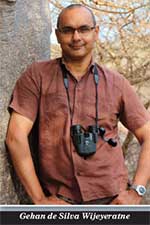 Remarkably, no Sri Lankan marine biologist played any role in publicizing whale watching in the early years. However, soon after, they benefited by being thrust into the media spotlight by film crew researchers who had read the publicity which began with my various widely disseminated articles. Having read them, and sometimes after conversations with me, the film crews and the press came to Sri Lanka and incorporated local marine biologists into their story.
Remarkably, no Sri Lankan marine biologist played any role in publicizing whale watching in the early years. However, soon after, they benefited by being thrust into the media spotlight by film crew researchers who had read the publicity which began with my various widely disseminated articles. Having read them, and sometimes after conversations with me, the film crews and the press came to Sri Lanka and incorporated local marine biologists into their story.
At the time I broke the first story, I do not think any of the local marine biologists had even one image of a Blue Whale of a publishable standard or had any idea that Sri Lanka was the best place in the world to see Blue Whales. Hopefully, the increased profile of local marine biologists has made it easier for them to raise the funds needed for their important research.
Q: Did the Sri Lanka Tourism Promotion Bureau help your efforts with publicity and branding?
A:
Yes indeed. At the start of the publicity campaign, we produced a series of informative and attractive publications designed by Chandrika Maelge. These were printed and distributed at key consumer and travel trade fairs such as the Bird Fair, WTM and Destinations where a number of important press and tour operators were informed about Sri Lanka being a good place for whales. At some of the press drinks events in London hosted by Jetwing Eco Holidays, around 35-45 press people would attend. These events were held in collaboration with the London Office of the SLTPB.
In some years, As many as three of these press events were held allowing personal interaction with a wide pool of media people. Another important and later development is the role played by Nalin Perera who ran the SLTPB office in London for several years and attended many consumer and travel trade fairs. I had developed media briefs for him which he would print and distribute. In one conversation, he estimated that he had printed and distributed over 10,000 copies of this material.
There were others who also disseminated my stories to the international press; a notable example being Chitral Jayatilake who shared my publicity pdfs with various wildlife documentary makers he invited to Sri Lanka.
Q: Did everyone readily embrace your ideas?
It took a couple of years. I remember even into the second year of the publicity campaign there were doubts from the big companies in tourism.
I remember Srilal Miththapala who was then President of The Hotels Association of Sri Lanka speaking to me and joining a celebrity whale watching event I was leading with Shyamalee Tudawe. This was organized by Olivia Richli of the Amangalla in Galle.
Srilal wanted to report back to the association if there was any truth to the claims being made by me about how easy it was to see Blue Whales. On the coastline, the people running small guesthouses readily embraced the story as tourists who were reading my stories turned up with copies of my articles and asked for boats to take them whale watching. The international press also readily took it on as I provided credible data.
Q: What do you say to criticisms that whale watching needs better regulation?
I agree on the need for better regulation and higher standards. The tourism industry has played its part in publicizing whale watching. Other state agencies also need to step up their efforts to regulate the industry in a way that is good for the welfare of the animals and provide a good visitor experience.
Q: What do you expect ‘A Naturalist’s Guide to the Mammals of Sri Lanka’ to achieve?
I would like people to understand that there is still a lot to be discovered about Sri Lanka’s mammals and I hope this portable and affordable guide will find its way into the hands of local naturalists and inspire more research and more practical steps to conserve habitats and species.
Life style
Modern Brides and Grooms collection by LOVI Ceylon and friends

Brides and Grooms of Sri Lanka – Reimagined
“Together we’re creating moments of happiness and cherished memories for the new couple and their families” said Founder and CEO of LOVI Ceylon, Asanka de Mel, as he introduced LOVI Ceylon’s Groom collection. Each groom’s look was paired with extraordinary creations from Sri Lanka’s top bridal designers, jewelers, florists, hair and make-up artiste and was captured by story-telling photographers.
The presentation graciously hosted by the Taj Samudra and Shangri-La hotels saw 30 leading designers working hand in hand to infuse fresh ideas, celebrate cultural diversity and show-off Sri Lankan couture—the island’s hand craft heritage.
The stunning bridal costumes were painstakingly made by renowned designers Messrs. Dhananjaya Bandara, Rishard Raheem, and Michael Wijesuriya as well as Mses. Indi Yapa Abeywardena of Brides by INDI, Sonali Dharmawardena, Darshi Keerthisena of Buddhi Batiks, Ramona Oshini, Sandani Perera of IKIGAI Bridal, and Jaish Parathalingam of Aashkii. The newcomer, Ms. Anusha David also presented her couture creations under the label Gabriel.
“We want our Groom and all of the men in the wedding including the groomsmen, dads, young boys and friends, to be themselves–to feel rooted in culture, well dressed and at ease on the wedding day,” says Asanka. Celebrating the religious and cultural traditions including Buddhist, Christian, Hindu, Kandyan, Malay, Muslim, Sinhala, Tamil and western traditions of the island LOVI Ceylon’s Grooms’ range presented modern sarongs paired with formal shirts, jackets, kurtas and more. They were paired with sarees, dresses, lehengas, pant suits and an array of breathtaking outfits. There were many looks offered for the Sri Lankan diaspora, as well as couples seeking inspiration for destination weddings.
As the designs progressed from sketch to stitching, our jewelry partners Careems, Lalitha, Mallika Hemachandra, Tiesh and Vogue jewelers added their brilliant sparkles with handcrafted fine jewelry made of precious metals encrusted with diamonds, sapphires and rubies. And what wedding would be complete without flowers? Bringing the latest floral creations were florists Designer Flowers, Flowers by Joan and Karen Forbes, Lassana Flora, and Supreme Flora who made the spectacular bridal outfits blossom with their creations.
Breathing life into these wonderful creations with superb hair and make-up was anchor of the shoot, Ms. Nadiya Fernando and her collaborator Omesh, while Ramani Fernando Salons, Shane Perera, Viran Peter, Brides by Leena and Talia designs, also worked magic on the models.
The father son duo Dinuka and Dineth Fonseka of Studio3000 took on the herculean task of capturing all the creations as the anchor photography partner. The works of Ashene Bernard, Amarante Studio, Geeshan Bandara, and Portrait Culture were also presented in imaginative and artistic captures.
De Mel expressed his thanks to the wonderful models who brought the visions and fancies of the designers to life, as well as poet and author Ashok Ferrey for being the MC of the shoot and providing an eloquent commentary, delivered with his inimitable panache!
“We have world class craftsmanship here, it’s fun to work with so many experts, who just happen to be friends, to present a beautiful collection that could nudge the course of Sri Lankan clothing identity” said Asanka when asked about the work that went into this.
As he rightly reminded the gentlemen to choose wisely, “on that special wedding day, when all eyes are on her–her eyes are on you!”









